
Single Crochet Two Together (sc2tog)
Single crochet two together decreases the number of stitches by one by making two single crochet into one.
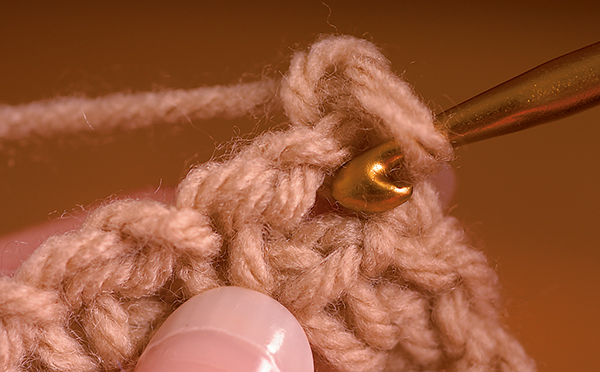
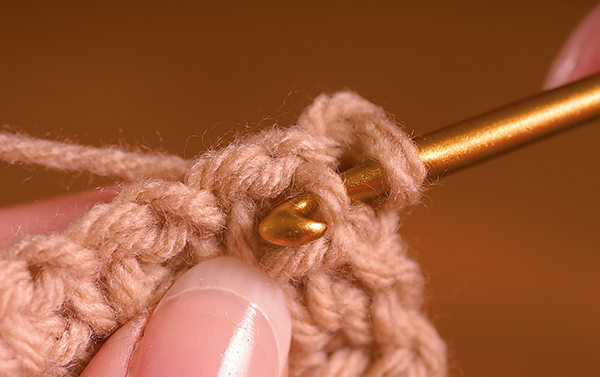
1. Insert the hook into the first stitch to be decreased (in this example, it is a chain space). Yarn over and pull through. Two loops on hook.
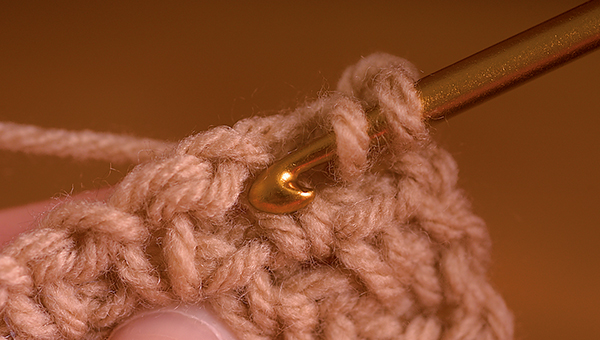
2. Insert the hook into next stitch. Yarn over (yo) and pull through. Three loops on hook.
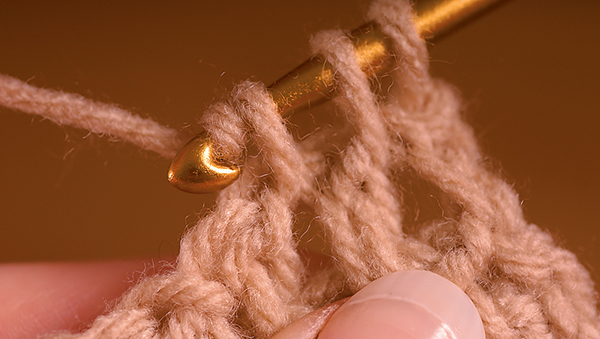
3. Yarn over and pull through all three loops.
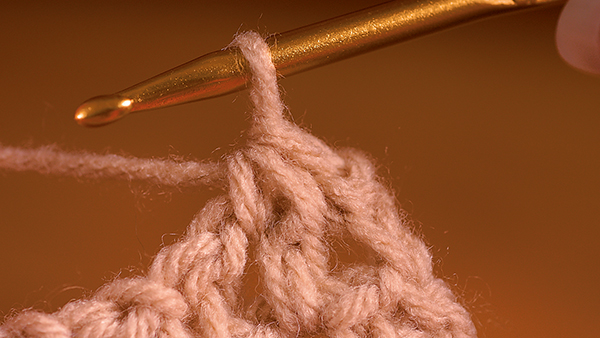
4. This completes the single crochet two together.
Double Crochet Two Together (dc2tog)
This takes two double crochet stitches and joins them at the top (decreasing one stitch).
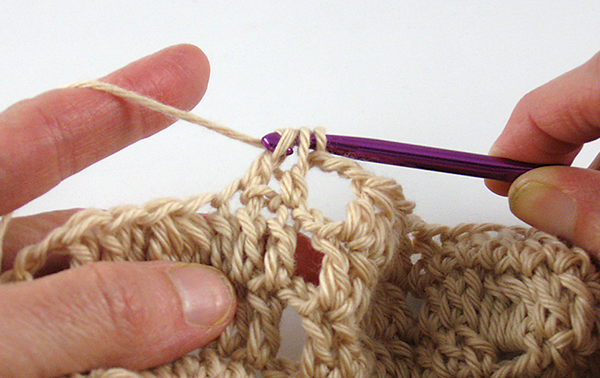
1. *Yarn over, insert hook as indicated, yarn over and pull up a loop, yarn over and pull through two loops (leaving two loops on hook). Repeat from * once more, then yarn over and pull through all three loops.

2. The double crochet two together is completed.
Front Post Double Crochet (FPdc)
Front post stitches are raised stitches on the surface of the fabric facing you.

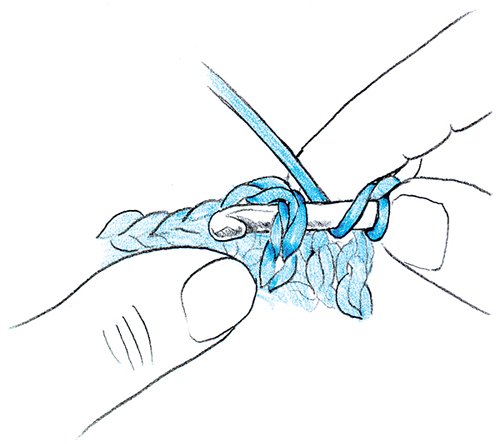
1. To work a front post double crochet, yarn over, and then insert the hook from right to left around the post of the stitch below. The hook should start and end at the front of the work.

2. Continue with the double crochet stitch by wrapping the yarn over the hook, then pulling up a loop. Complete the stitch with the hook in this position.
Back Post Double Crochet (BPdc)
Back post stitches appear to recede on the surface of the crocheted fabric that’s facing you.

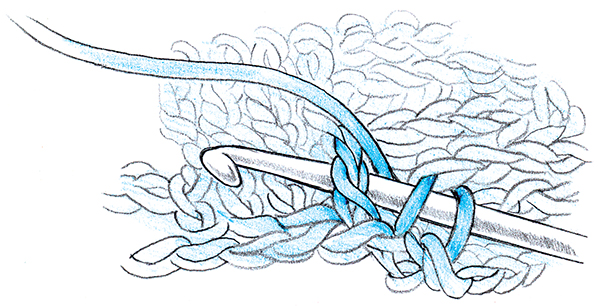
1. To work a back post double crochet, yarn over, and then insert the hook from right to left around the post of the stitch below. The hook should start and end at the back of the work. In the photo and the illustration, the work is bent to expose the back to show you where to place the hook.
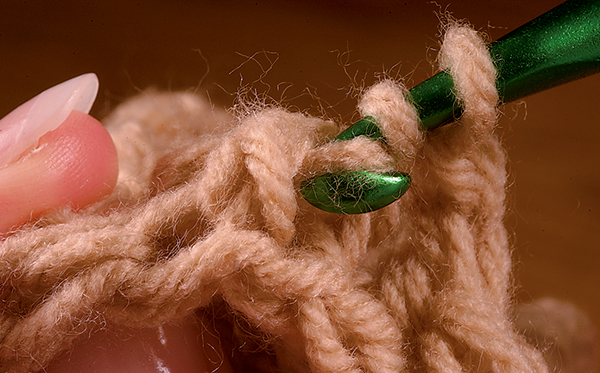

2. Continue with the stitch by wrapping the yarn over the hook, then pulling up a loop. Complete the stitch with the hook in this position.
TIP» When you work a front post double crochet, tilt the work slightly away from you to make it easier for the hook to go behind the post and come out to the front again. When you work a back post double crochet, tilt the work slightly toward you to expose the back posts.
Reverse Single Crochet (rsc)
Reverse single crochet is worked like a standard single crochet, except the stitches go from left to right (for left-handers, reverse sc goes from right to left). Also known as corded single crochet or crab stitch, it gives a twist to each stitch, creating an attractive corded edge.
NOTE: In the following photos, the reverse single crochet is worked through two layers to attach them together at the same time as the edging is worked.
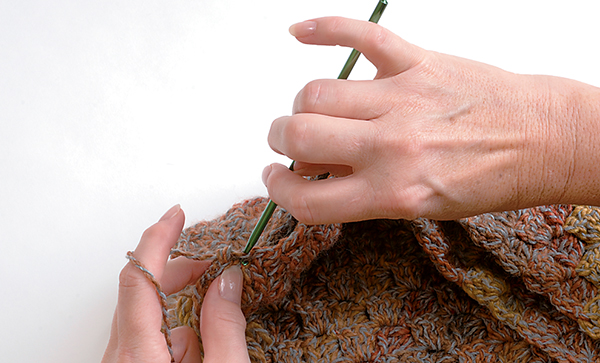
1. After attaching the yarn with a regular single crochet, insert the hook in the next stitch to the right. Point the hook downward to get it through the stitch more easily. Yarn over and pull up a loop.

2. Yarn over and pull through both loops to complete the stitch. Continuing to the right, work one reverse single crochet into each stitch of the previous row (or as directed in pattern).
Tunisian Crochet
Tunisian crochet, also known as the Afghan stitch, is a type of crochet that uses an elongated hook, often with a stopper on the end. It is sometimes considered to be a mixture of crocheting and knitting, and the Tunisian knit stitch greatly resembles knitted stockinette stitch. The fabric created by Tunisian crochet is slightly less elastic than normal crochet and substantially thicker, which makes it a good choice for blankets and winter knits. However, using a large hook with a light weight yarn creates a lacy, airy garment.
Each row is worked in two passes. The first pass, called the forward pass, goes from right to left and adds loops onto the hook. The second pass, called the return pass, moves from left to right and removes loops from the hook. (Left-handers will work in the opposite direction.)
The first row is called the foundation row. It is worked into the foundation chains.
1. Attach the yarn to the hook with a slip knot. Make the specified number of chain stitches.

2. Find the second chain from the hook. (Do not count the stitch that the hook is in.)

3. Push the hook through the chain from front to back.
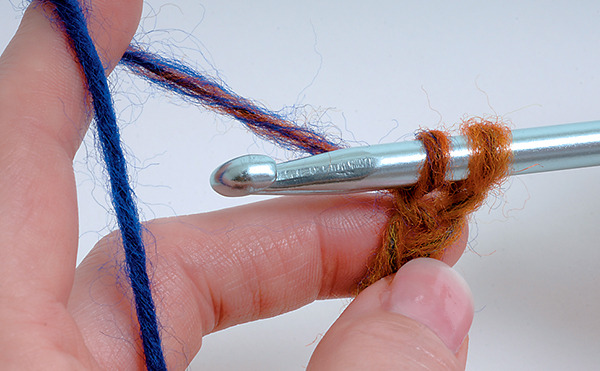
4. Wrap the yarn over the hook and pull to the front. There will be two loops on the hook. This starts the forward pass of the base row.
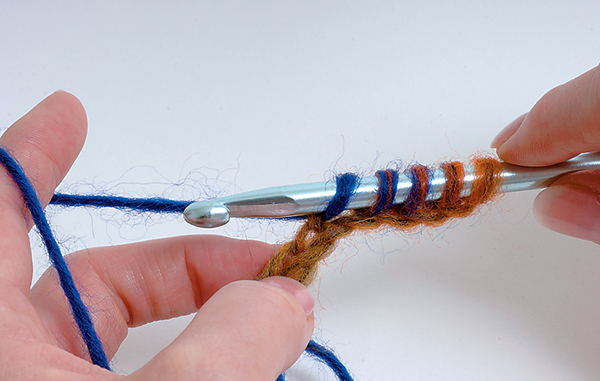
5. Continue across in this fashion, adding a loop to the hook for every chain. Make sure you include the final chain—don’t leave it out or you will not have enough stitches.
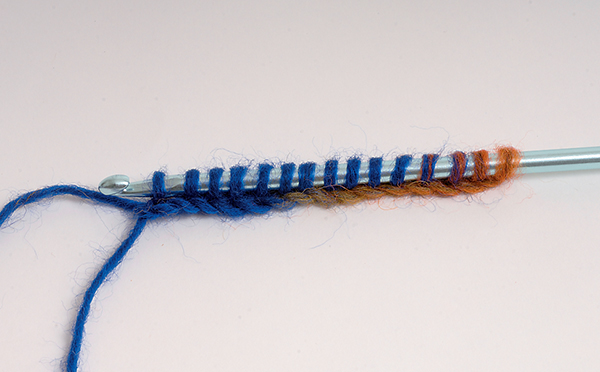
6. At the end of the row, count to make sure the number of loops on the hook is the same as the number of chains you made to get started. This completes the forward pass of the foundation row.


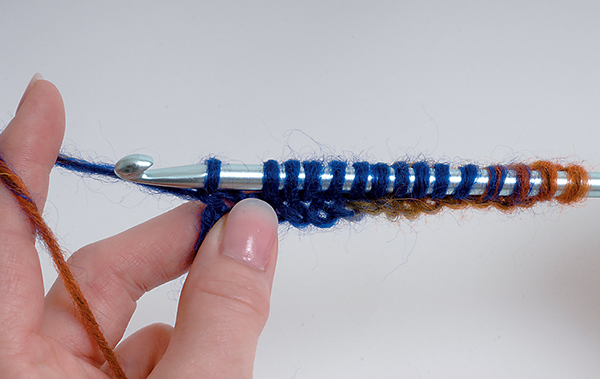
7. Do not turn. Now you will start the return pass of the foundation row. Yarn over and pull through one loop, like you are making a chain stitch.
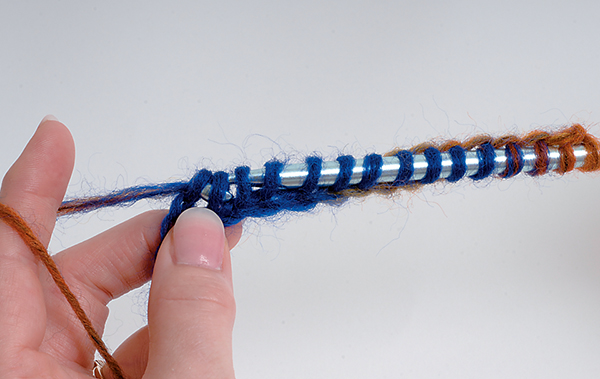
8. Yarn over and pull through two loops.
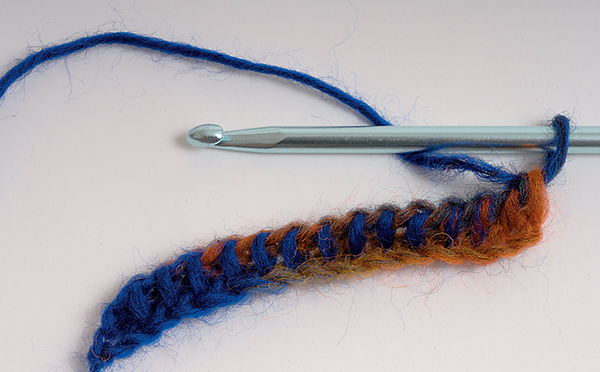
9. Continue to yarn over and pull through two loops to the end of the foundation row. You should end up with just one loop on the hook.
Look at the completed row of stitches. You will see a vertical bar for each stitch. These bars are what you will pick up as you work the Tunisian simple stitch forward pass.
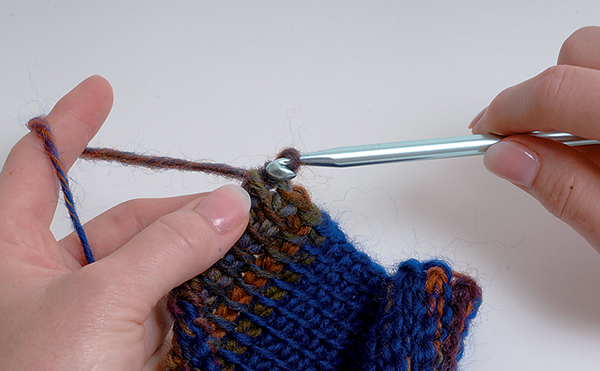
10. Skip the vertical bar that is on the far right side of the piece, right under the hook. Put the hook through the next vertical bar from right to left. Keep the hook at the front of the work, not poking through to the back.
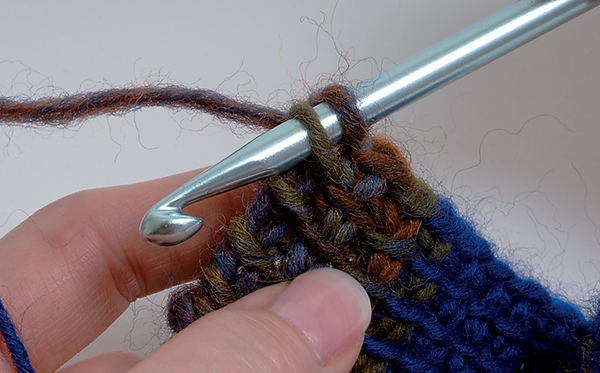
11. Yarn over and pull up a loop. There will be two loops on the hook, like in the forward pass of the foundation row.
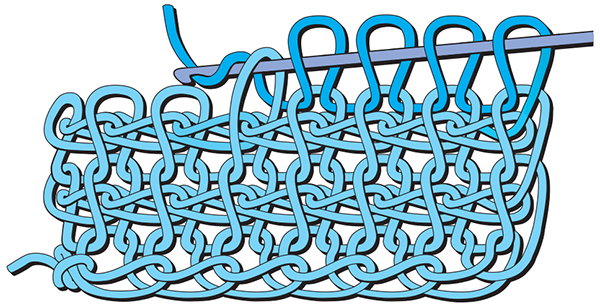
12. Continue across in this fashion, adding a loop to the hook for every stitch.
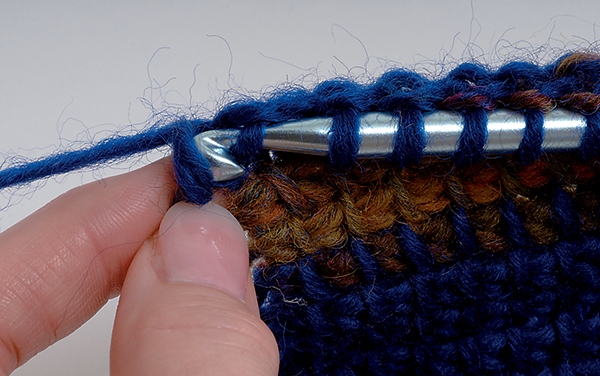
13. At the end of the row, pick up the vertical bar on the far left. Count to make sure the number of loops on the hook is the same as the number of stitches in the foundation row and the number of chains you started with. This completes the forward pass of the Tunisian simple stitch.
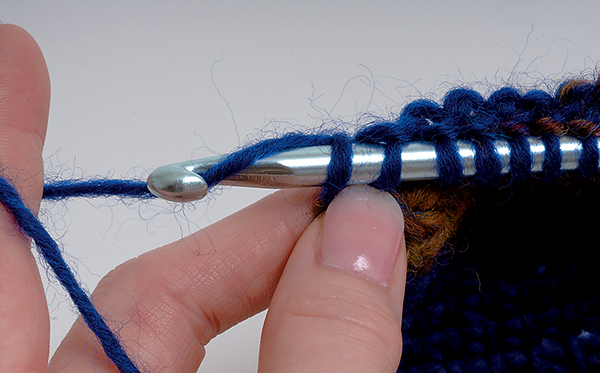
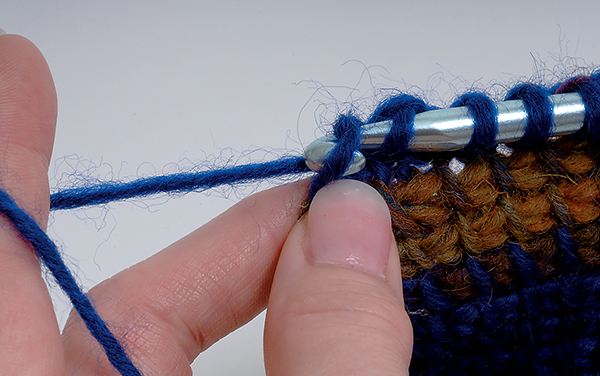
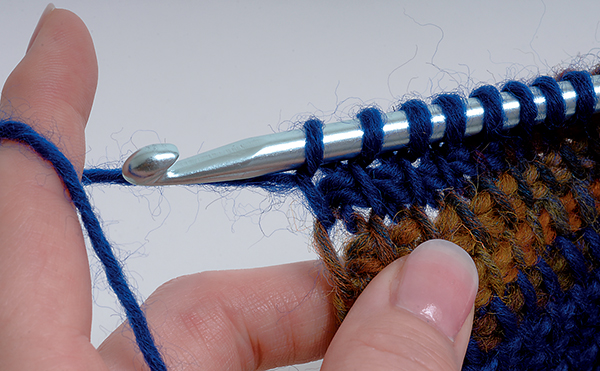
14. Do not turn. Now you will start the return pass of the Tunisian simple stitch. Wrap the yarn over the hook and pull through one loop, like you are making a chain stitch.

15. Wrap the yarn over the hook and pull through two loops. Continue to yarn over and pull through two loops to the end of the row. You should end up with just one loop on the hook.
Continue to work the forward and return passes of Tunisian simple stitch. After a few rows, turn the fabric over and notice how different the back looks from the front.
Tunisian crochet has a hazard well known to knitters: It is possible to “drop” a stitch either by inadvertently skipping a vertical bar on a forward pass or by pulling through the wrong number of loops on the return pass. If you count your stitches frequently, you will discover any errors almost immediately and will be able to correct them. Here’s how.
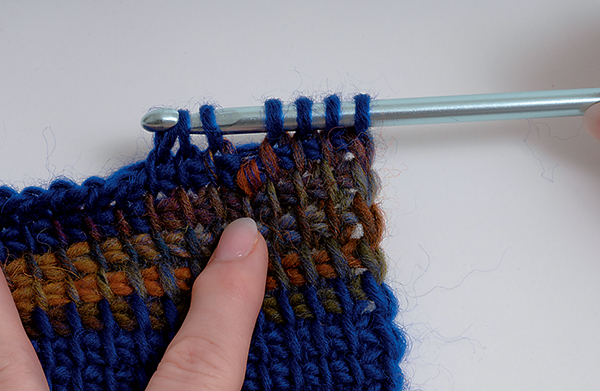
1. Identify the place where the stitch was missed. Here, the crocheter is on the return pass and sees that a vertical bar was missed.
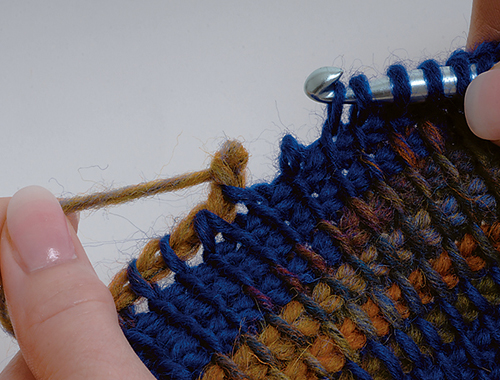
2. Remove the hook from the working yarn. Keep the other loops on the hook.
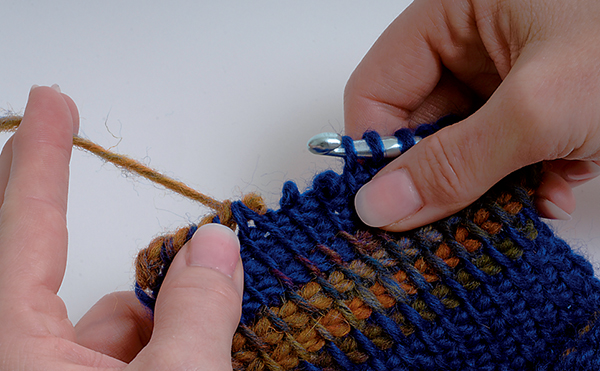
3. Gently pull the yarn out from the return pass and from the forward pass until you get to the bar you missed.
4. Pick up the missed bar and continue with the forward pass.
Unfortunately there is no good way to work a dropped stitch up through subsequent rows. You can rip out stitches until you get back to the error or, if it will not be noticeable in your finished project, you can add a stitch by inserting the hook between two stitches and pulling up a loop. Continue working the forward pass with the next vertical bar.

